What is a License Plate Recognition Systems?
License Plate Recognition Systems are a technology that utilizes Optical Character Recognition (OCR) to capture and convert images of vehicle license plates into text data that can be stored, analyzed, and compared within a software system.
This technology is widely used in smart parking solutions, leveraging the license plate characters as a unique identifier (ID) for vehicles entering and exiting parking lots. The system records key information, such as the license plate number, the driver’s identity, and entry/exit times, which are then stored and analyzed for further management purposes.
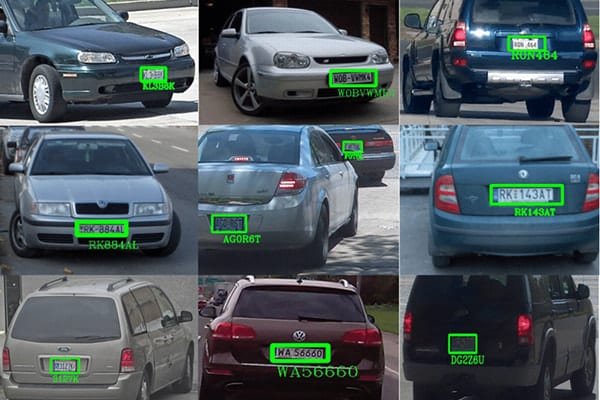
Key Features of a License Plate Recognition System
The license plate recognition systems system offers several prominent features that enhance its efficiency and functionality:
- Smart Technology Integration: The system combines advanced license plate recognition software with specialized cameras and automated barriers to securely and efficiently manage vehicle access.
- Multi-vehicle Compatibility: It can recognize various types of vehicles, including motorcycles, cars, and trucks.
- High Recognition Accuracy: The system achieves up to 98% recognition accuracy, ensuring a reliable operation.
- Fast Processing: The system processes a license plate in approximately 0.7 seconds, making it extremely efficient for busy environments.
- Indoor and Outdoor Installation: The system is designed to operate seamlessly both indoors and outdoors, handling diverse environmental conditions.
- Easy Installation and Operation: The system is user-friendly, with straightforward installation and operational procedures.
- Failure Backup: In the event of a system failure, there are contingency plans to maintain functionality.
- Automatic Barrier Operation: The system can automatically open and close barriers, extract vehicle data, and provide a summary of vehicle entries and exits. It can also track payment data for individual vehicles and offer monthly statistics for both cars and motorcycles.
- Seamless Information Retrieval: The system provides quick access to data about license plates, entry and exit times, temporary and permanent vehicles, and more, facilitating easy searches for vehicle information.
- Integration with Smart Parking Systems: It can be integrated with various parking technologies, such as card readers, long-range card systems, and automatic vehicle counting systems.
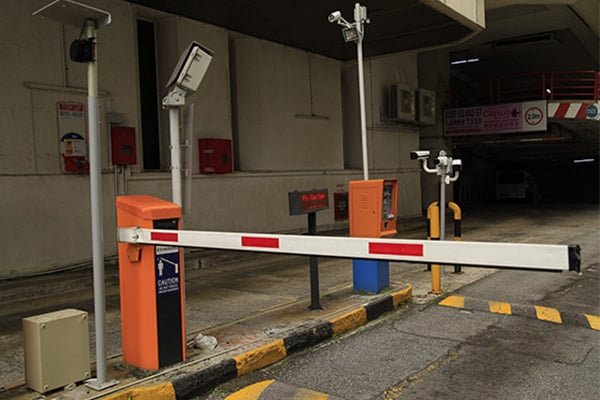
Benefits of a License Plate Recognition System
license plate recognition systems systems provide numerous advantages for both vehicle owners and management teams:
For Vehicle Owners:
- Vehicle Security: The system offers a secure, closed-loop management process that stores detailed images and information about vehicles entering and exiting, ensuring that only authorized vehicles can access the premises.
- Transparent Payment: The system logs payment details clearly and accurately, reducing disputes and misunderstandings.
- Minimized Waiting Time: Vehicles can enter and exit parking lots quickly, reducing the time spent waiting at barriers.
- Enhanced Privacy: Vehicle owners’ information is securely stored, preventing unauthorized access and protecting against data theft.
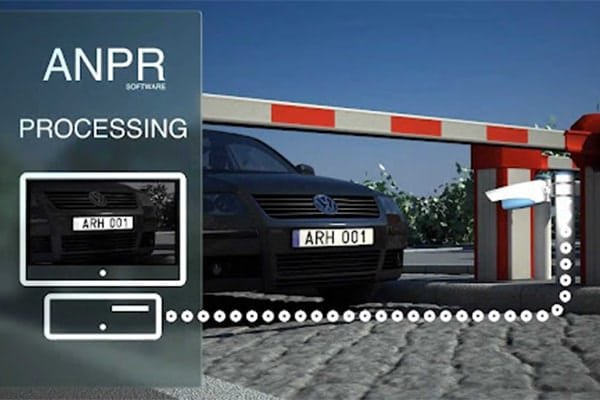
For Management Teams:
- Cost-Effective Vehicle Management: The system reduces the cost of managing large volumes of vehicles by automating processes.
- Reduced Staffing Costs: With automated systems in place, there is less need for human staff. One or two security guards can oversee thousands of vehicles.
- Revenue Management: The system tightly monitors revenue streams from parking fees, minimizing potential losses.
- Quick Data Retrieval: Information regarding vehicle movements, license plates, and revenue can be accessed rapidly, improving decision-making and operational efficiency.
- Modern, Efficient Parking Facilities: Implementing license plate recognition systems projects a professional, modern image to customers, improving the overall experience in the parking facility.
===> Learn more: Types of Intercom Systems and Their Applications
Components of a License Plate Recognition System
Several key components are required to build a fully functional license plate recognition systems system:
Desktop Computer: The desktop serves as the primary control hub for the system, running the software that manages vehicle entry and exit data. It also connects to other components to ensure smooth operation.
- When selecting a desktop, choose a pre-built system from trusted brands like Dell, HP, or ASUS to ensure durability and stability. The specifications of the desktop should match the scale of the vehicle traffic being managed.
- If the system is installed in harsh environments (e.g., areas with dust, high humidity, or heat), an industrial-grade computer may be necessary to maintain reliable operation.
- Laptops are not recommended for this system due to their limited performance and inability to handle continuous, large-scale operations.
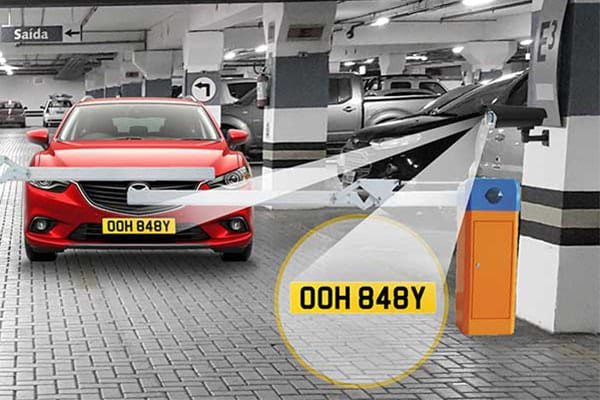
License Plate Recognition Software: The software is the most crucial part of the system. Poorly designed software may lead to issues such as freezing, constant error messages, and inaccurate character recognition, especially in high-traffic environments. Hence, selecting a reliable and well-tested license plate recognition systems software solution is essential.
Specialized License Plate Camera: Cameras used to capture license plates play a vital role in the system. Low-quality cameras may produce blurry or overexposed images, particularly when installed outdoors. To avoid such issues, opt for reputable brands like Hikvision, Dahua, or KB Vision.
- Ideally, cameras should offer at least 2.0 Megapixel resolution, along with features such as WDR (Wide Dynamic Range), HLC (High Light Compensation), and BLC (Back Light Compensation).
- IP cameras are preferred over coaxial cable-based cameras for better performance and flexibility.
Automatic Barrier: The automatic barrier (or gate) controls vehicle access. When the system verifies the vehicle’s license plate, the barrier automatically opens to allow entry or exit. A fast barrier with an opening time of 1.5 to 3 seconds is recommended to ensure efficiency in high-traffic areas.
Automatic Closing Trigger: The automatic closing system includes loop detectors and magnetic loops that trigger the barrier to close after the vehicle passes. Without this, security staff would need to manually close the barrier, which is less convenient and efficient.
Controller to Connect Barrier and Software: A controller is needed to connect the automatic barrier to the software system. The controller ensures smooth communication between the barrier and the computer’s software, allowing for automatic barrier operation.
Speed Bumps: Speed bumps are placed on the ground to help vehicles stop at the correct position for accurate license plate recognition.
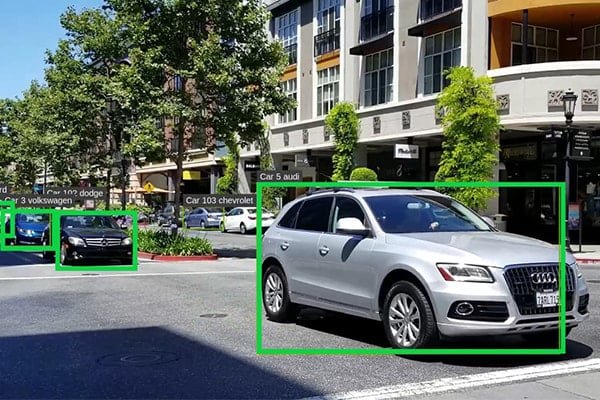
How Does a License Plate Recognition System Work?
The system operates by capturing the license plate image and comparing it to stored data. Here’s a step-by-step breakdown:
Entry Process:
- Both registered vehicles and temporary (unregistered) vehicles approach the speed bump and stop for 3-5 seconds.
- The camera captures the license plate, and the system analyzes the image to match it with existing data.
- Registered vehicles are granted access, and their information (owner’s name, phone number, vehicle type, color, etc.) is displayed. The barrier opens automatically.
- For temporary vehicles, the camera captures the license plate, and the system stores the data for future comparison when the vehicle exits.
Exit Process:
- Vehicles stop at the speed bump for 3-5 seconds while the system captures their license plate for comparison.
- If the vehicle data matches the stored information, the system opens the barrier, allowing the vehicle to leave. Temporary vehicle owners may be required to pay before exiting.
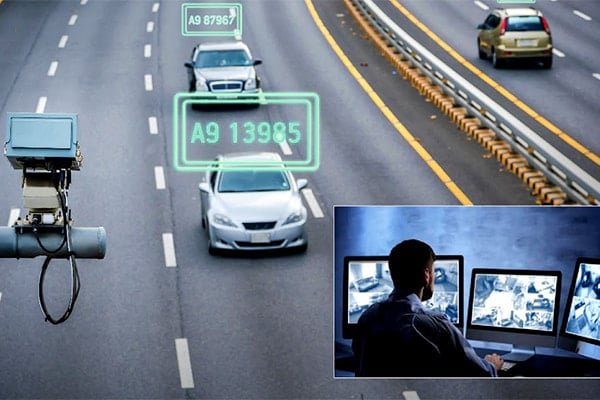
Considerations When Installing and Using an license plate recognition systems System
- Installation: Selecting the right equipment is crucial, and the components should be installed in suitable positions for optimal performance. Environmental conditions such as lighting, weather, and vehicle types must also be considered.
- Software Usability: The software should be simple and intuitive to operate. Training staff to use the system properly ensures smooth functionality.
- System Use: Vehicles should follow the designated paths, and license plates must be clean and clearly visible. Vehicles should approach the speed bump slowly (around 5 km/h) for accurate recognition.
If you’re considering installing a license plate recognition system, reach out to a trusted provider like NT Security for consultations and installation services.

